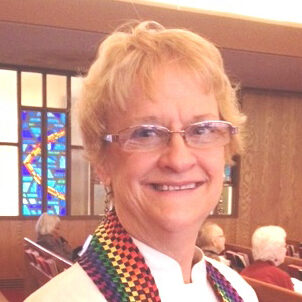A New Look at Hebrews
What are rituals, anyway? My Quaker husband uses that term for symbolic outward actions in worship. I prefer the United Methodist description of sacraments: “an outward and visible sign of an inward and spiritual grace.” This is true when we prepare ourselves for worship, anyway: for Holy Communion or baptism, or really any time we gather for worship together. The Quakers call this a “gathered meeting.” But whatever words we use, it is amazing when God is truly present and we’re open to perceiving it!
 Enter the Book of Hebrews. I’ve always found it theologically dense, no doubt because it begins with the former Jewish Temple worship of animal sacrifice. That’s anathema to me. But it ends up revealing Jesus Christ as both the greatest High Priest and the ultimate sacrifice, a channel for God’s forgiving human sin and ending the necessity for any further sacrifice for all time.
Enter the Book of Hebrews. I’ve always found it theologically dense, no doubt because it begins with the former Jewish Temple worship of animal sacrifice. That’s anathema to me. But it ends up revealing Jesus Christ as both the greatest High Priest and the ultimate sacrifice, a channel for God’s forgiving human sin and ending the necessity for any further sacrifice for all time.
But here is where today’s surprise reading came in. While I hate anything related to sacrifices, I value highly any outward actions that reflect the “inward and spiritual grace” that God has done and keeps doing on my behalf and on behalf of us all. Using classical Christian terms, these grateful-for-grace actions are the “sanctification” that follows justification – however we live our lives in response to God’s overwhelming love, compassion and forgiveness.
Wait a minute. That’s stewardship, isn’t it?
Your partner in ministry,
Betsy Schwarzentraub


